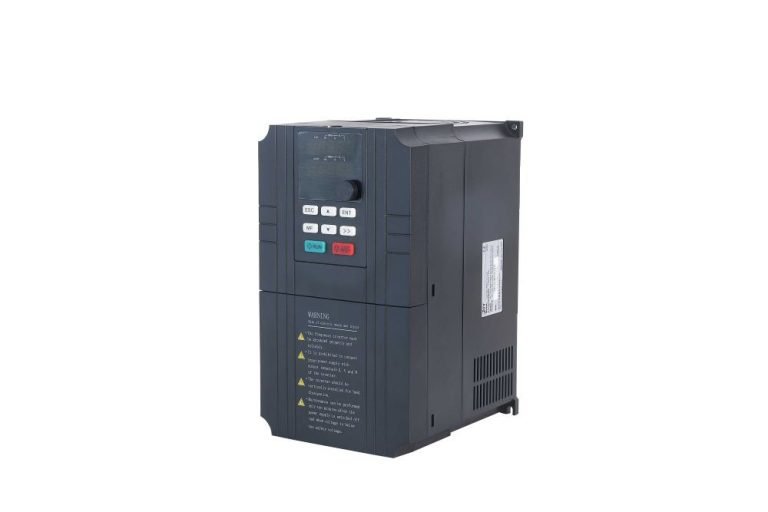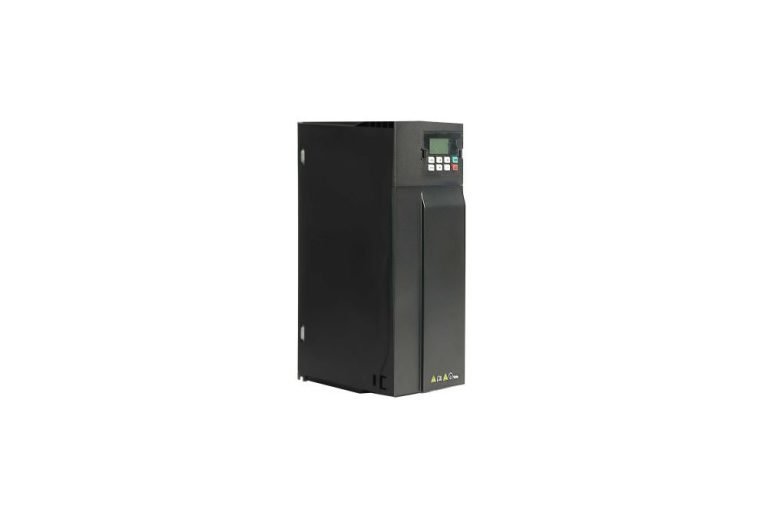1.1 Safety Precautions
Before electrical wiring, equipment operation, inspection, and maintenance, thoroughly read this manual to ensure correct usage. Familiarize yourself with peripheral supporting equipment and relevant safety measures.
**Wiring**:
– Wiring must be performed by professional technicians following electrical safety operating standards.
– Install the inverter before wiring.
– Conduct wiring strictly according to the company’s engineering drawings.
– Ensure proper grounding of equipment and the system.
– Never connect the inverter’s output terminals (U, V, W) to an AC power supply.
**Operational Use**:
– Only power on the transformer and power unit when their cabinet doors are closed. Do not force them open during operation.
– Do not operate switches with wet hands.
– Do not touch live parts of the inverter when powered.
– Do not control the high voltage inverter’s start and stop using the circuit breaker for the power grid.
1.2 Safe Operation
This product series is for 3 – 10kV power supply systems, directly connected to the high – voltage grid. During operation:
1) Operators must wear high – voltage – resistant insulating shoes before entering the high – voltage equipment operation area.
2) Lay insulation mats around the equipment.
3) High – pressure operation is prohibited.
1.2.1 Inspection Before First Power Transmission or After Maintenance **Check Items**:
– Confirm that high – voltage input/output cable connection terminal screws are tightened.
– Ensure cables between cabinets (separated for transportation) are correctly and securely connected.
– Confirm all control and signal lines are correctly and firmly connected.
– Ensure system grounding wires between cabinets are reliably grounded to the plant ground.
– Ensure series and neutral cables between units are properly and securely connected.
1.2.2 Routine Check Before Power Transmission
**Check Items**:
– Remove all ground protection wires before power transmission.
– Check if the filter screen needs replacement.
– Check if inverter fault information has been handled.
– Close and lock the inverter cabinet door.
1.2.3 Blackout Operation
**Operation Items**:
– Inform all relevant stations of the power failure.
– Press the high voltage converter’s stop button to stop the equipment.
– Disconnect the user inlet cabinet’s circuit breaker.
1.2.4 Maintenance Operation
**Maintenance Items**:
– When maintaining the circuit, take necessary measures: disconnect the circuit breaker, relevant isolation switch, and hang a warning board to prevent power – on.
– Confirm the shutdown state and that the high – voltage live indicator is off.
– After high/low – voltage power cut, conduct electrical inspection before working. Use an electroscope of the corresponding voltage level for high – voltage electroscopy and wear insulating protective gear.
– After verifying no electricity, ground the construction equipment’s three – phase incoming line.
– Ground the construction equipment wherever possible for electricity transmission. For double – circuit power supply units, when repairing a bus brake, isolation switch, or load switch, disconnect both bus brakes and ground both ends of the construction brake.
– When installing a ground wire, ground it first and then hang it. When removing, do the reverse. Wear insulation protection equipment.
– Hang the ground wire where it’s visible to staff and attach a “someone working” warning sign.
1.2.5 Security Rules and Warnings
High – voltage inverters are designed with user safety in mind. However, due to the energy – storage capacitor in the power unit, there may be high voltage after power – off, and some components are hot, so do not touch them. When working near the inverter:
**Dangerous**:
– Strictly follow correct procedures before maintenance or overhaul.
– Only maintain or overhaul the inverter after it’s powered off and cooled.
– Install equipment and do electrical wiring according to national and industrial standards.
– After turning off the input circuit breaker, check for voltage before operation as there may still be some in the cabinet.
– Instruments must meet pressure – resistance requirements, and their enclosures should be well – grounded.
– Be careful when measuring components in the cabinet; avoid rod collisions or contact with other terminals.
– Only professional technicians can install, overhaul, and maintain the inverter.
– Do not replace or remove the cabinet – top fan without turning off control power.
**Attention**:
– Do not disconnect the control cabinet’s control power during high – voltage supply. – Do not store flammable materials in, on, or near the high – voltage cabinet, including equipment drawings and manuals.
– For long – distance transportation, use a flat truck and ensure the inverter’s base is level. In rain or snow, take preventive measures like wrapping with linoleum cloth.
– When lifting the inverter, ensure the crane, rope, and crane have sufficient tonnage. – When disposing of discarded components (e.g., capacitors), follow relevant regulations.
To Prevent Electrostatic
Some components in printed circuit boards and power units are static – sensitive. Only professional technicians can handle them after taking anti – static measures:
– Operators must wear anti – static bracelets.
– Store electrostatic – sensitive devices in anti – static bags during transportation.
– Hold the printed circuit board by the edge.
– Do not slide the printed circuit board on any surface.
– When sending components for repair, use anti – static packaging.



